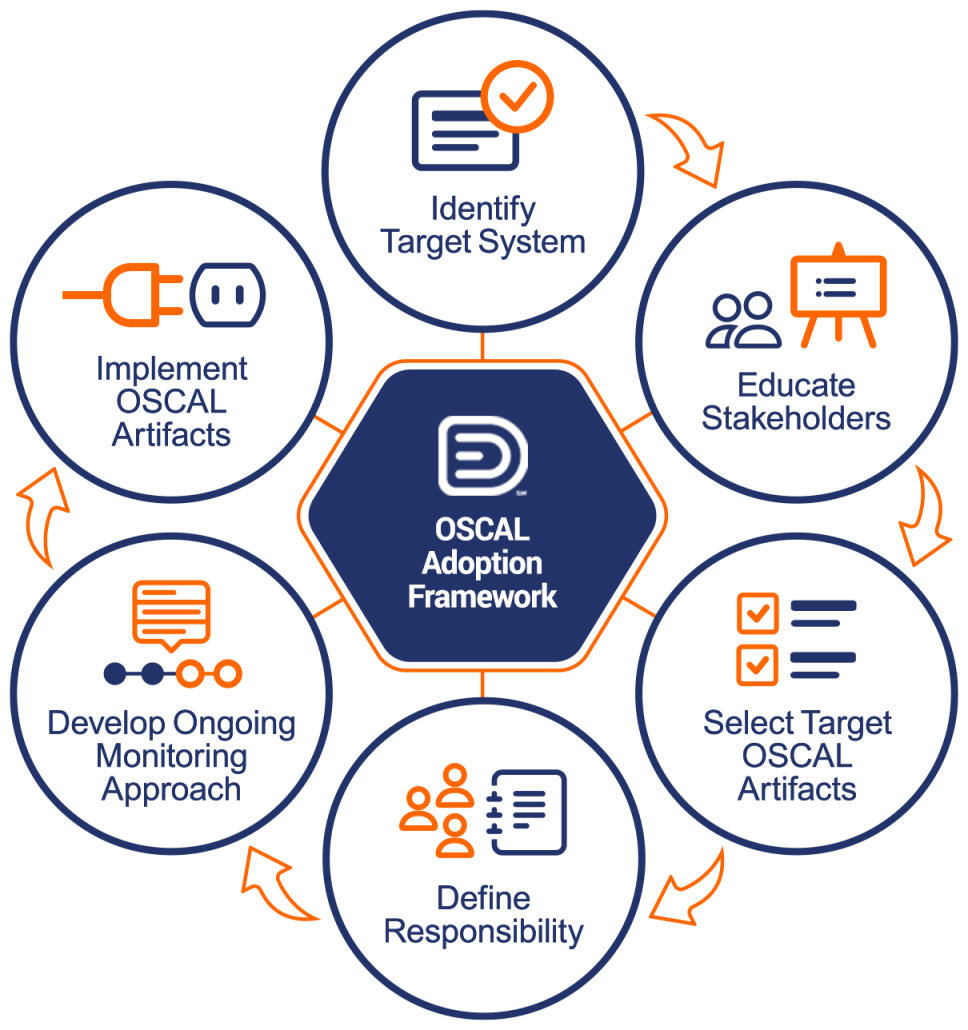Open Security Controls Assessment Language
OVERVIEW
The future of compliance automation is here.
Across both the public and private sector, it’s clear that today’s approach to risk management – a slow, costly, labor-intensive process – is out of step with an increasingly fast-paced digital world. A lack of regulatory standards is also problematic, magnifying cost and time burdens across entire sectors and industries. Without harmonization and reciprocity, all compliance programs will eventually suffer under the weight of redundancy, inefficiency, and high costs.
To address these challenges, NIST released the Open Security Controls Assessment Language (OSCAL), a standardized framework that enables compliance automation at scale.
The Gold-Standard Solution
OSCAL is unique in that it standardizes the complete compliance lifecycle, using automation and innovation to dramatically improve efficiency. By introducing a standardized, data-centric method for compliance lifecycle management, OSCAL allows organizations to:
- Decentralize the creation of security control and documentation to developers and engineers
- Assess compliance control implementations across multiple information systems and components
- Support multiple regulatory frameworks simultaneously
- Automate compliance documentation, security plan validation, and monitoring capabilities

Our Unique Innovations
Our approach to OSCAL innovation focuses on providing the community with free, standardized tools for managing the compliance life cycle. Over the past 3+ years, our team has lead the way on developing new OSCAL capabilities, tackling multiple open-source projects throughout 2020 and releasing an OSCAL Viewer in 2021. This year, we launched OSCAL.io, a central hub that serves as a repository for valuable OSCAL resources like templates, artifacts, and user guides.

An Ongoing Commitment
Easy Dynamics has developed an Adoption Framework to support and accelerate every organization’s journey to OSCAL adoption. The framework describes a 6-step process, from identifying targets to optimizing educational and change management efforts – all of which enhance the ability to develop and maintain highly-reusable compliance artifacts. The process also leverages our open-source work to speed the adoption timeline and bring non-technical team members into the shift-left compliance workflow.

The Economic Impacts
The business case for automation is clear: OSCAL can make big economic impacts, particularly at scale. Based on our own use cases, early ROI indicators demonstrate that 20-40% efficiency can be achieved by standardizing the compliance life cycle and improving information management; introducing automation and interoperability can yield gains as high as 60%. When considering the ingestion of real-time signals, connected governance, and artificial intelligence, we find that even more significant gains in efficiency and quality are achievable.

Learn More
Talk to our experts about how you can accelerate your OSCAL adoption journey today